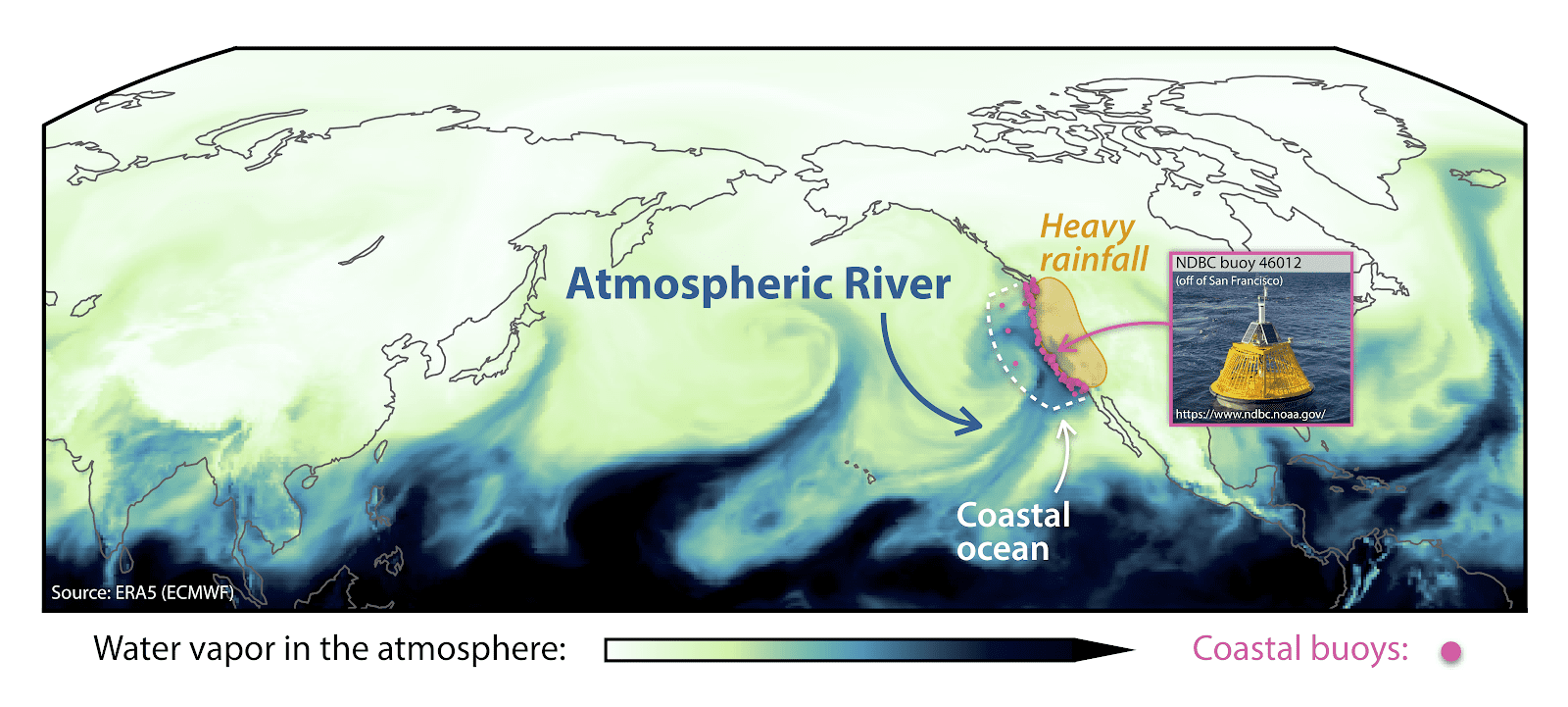By Randy Showstack

Atmospheric Rivers (ARs) are plumes of intense water vapor content and strong winds that flow out from the humid tropics like rivers. These ARs travel eastward above the Pacific Ocean, eventually causing heavy rainfall along the U.S. West Coast. In this study, researchers looked at how the coastal ocean influences the intensity of ARs just before these plumes impact the heavily-populated coastline. Their research included analyzing decades of meteorological data recorded by coastal buoys.
Atmospheric rivers (ARs) above the Pacific Ocean are double-edged swords. The elongated plumes bring intense water vapor content from the tropics toward the mid-latitudes and play a huge role in the global hydrological cycle. When the rivers reach the U.S. West Coast, the vapor condenses into liquid water with resulting drenching rain that can end droughts and replenish water supplies, but that can also cause flooding and mudslides.
ARs that swamped the West Coast in 1998 and 2015 during El Niño episodes motivated researchers to test how much of an effect the coastal ocean and its temperature have on landfalling ARs.
In a paper published in Geophysical Research Letters, researchers found that ARs derive moisture, known as latent heat flux, from the coastal ocean as the rivers travel over it right before landfall. They also found that variations in ocean temperature have an effect on how much energy is transferred from the ocean to ARs. For instance, during El Niño years when the ocean is warmer, the ocean along the southern part of the coast transfers about 70% more energy into ARs than during colder La Niña years.
To study the connection between the coastal ocean and late winter landfalling ARs from 1979 to 2017, researchers relied on a dense network of 138 buoys that measure sea surface and air temperature along the West Coast.
Most AR studies focus on their atmospheric structures and hydrological implications, while the role that the coastal ocean and air-sea interactions play in landfalling ARs remains unknown to the scientific community. The study tackles this problem by estimating the variations in nearshore latent heat flux from the coastal buoys under historical AR events and documenting their systematic relationship with El Niño and La Niña, according to the paper’s lead author, Samuel Bartusek, a researcher with WHOI and Princeton University. He worked on the study with WHOI scientists Hyodae Seo, Caroline Ummenhofer, and John Steffen.
“If we can learn more about how changes in the coastal ocean affect atmospheric rivers coming ashore, then we can better understand and predict the impacts of specific atmospheric rivers,” Bartusek said.
